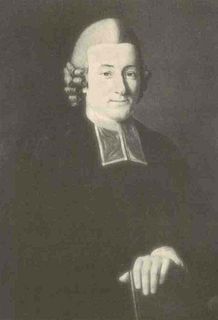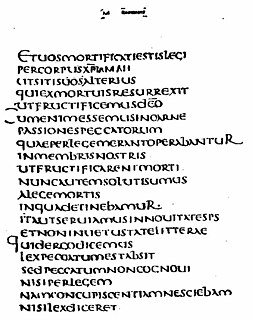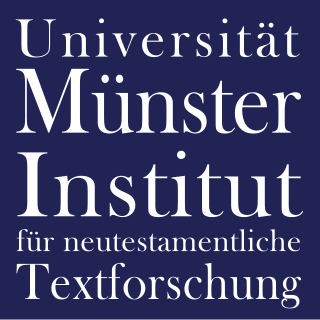
Textual criticism is a branch of textual scholarship, philology, and of literary criticism that is concerned with the identification of textual variants, or different versions, of either manuscripts or of printed books. Such texts may range in dates from the earliest writing in cuneiform, impressed on clay, for example, to multiple unpublished versions of a 21st-century author's work. Historically, scribes who were paid to copy documents may have been literate, but many were simply copyists, mimicking the shapes of letters without necessarily understanding what they meant. This means that unintentional alterations were common when copying manuscripts by hand. Intentional alterations may have been made as well, for example, the censoring of printed work for political, religious or cultural reasons.
In textual criticism of the New Testament, the Alexandrian text-type is one of the main text types. It is the text type favored by the majority of modern textual critics and it is the basis for most modern Bible translations.

Johann Jakob Griesbach was a German biblical textual critic. Griesbach's fame rests upon his work in New Testament criticism, in which he inaugurated a new epoch. His solution to the synoptic problem bears his name, but the Griesbach hypothesis has become, in modern times, known as the Two-Gospel hypothesis.

Textus Receptus refers to all printed editions of the Greek New Testament from Erasmus' Novum Instrumentum omne (1516) to the 1633 Elzevir edition. It was the most commonly used text type for Protestant denominations.
The Johannine Comma is an interpolated phrase (comma) in verses 5:7–8 of the First Epistle of John.

The Codex Alexandrinus, designated by the siglum A or 02, δ 4, is a manuscript of the Greek Bible, written on parchment. Using the study of comparative writing styles (palaeography), it has been dated to the fifth century. It contains the majority of the Greek Old Testament and the Greek New Testament. It is one of the four Great uncial codices. Along with Codex Sinaiticus and Vaticanus, it is one of the earliest and most complete manuscripts of the Bible.

Codex Claromontanus, symbolized by Dp, D2 or 06 (in the Gregory-Aland numbering), δ 1026 (von Soden), is a Greek-Latin diglot uncial manuscript of the New Testament, written in an uncial hand on vellum. The Greek and Latin texts are on facing pages, thus it is a "diglot" manuscript, like Codex Bezae Cantabrigiensis. The Latin text is designated by d (traditional system) or by 75 in Beuron system.

Novum Testamentum Graece is a critical edition of the New Testament in its original Koine Greek, forming the basis of most modern Bible translations and biblical criticism. It is also known as the Nestle–Aland edition after its most influential editors, Eberhard Nestle and Kurt Aland. The text, edited by the Institute for New Testament Textual Research, is currently in its 28th edition, abbreviated NA28.

The New Testament in the Original Greek is a Greek-language version of the New Testament published in 1881. It is also known as the Westcott and Hort text, after its editors Brooke Foss Westcott (1825–1901) and Fenton John Anthony Hort (1828–1892). Textual scholars use the abbreviations "WH" or "WHNU". It is a critical text, compiled from some of the oldest New Testament fragments and texts that had been discovered at the time.

A biblical manuscript is any handwritten copy of a portion of the text of the Bible. Biblical manuscripts vary in size from tiny scrolls containing individual verses of the Jewish scriptures to huge polyglot codices containing both the Hebrew Bible (Tanakh) and the New Testament, as well as extracanonical works.

Codex Laudianus, designated by Ea or 08, α 1001, called Laudianus after the former owner, Archbishop William Laud. It is a diglot Latin — Greek uncial manuscript of the New Testament, palaeographically assigned to the 6th century. The manuscript contains the Acts of the Apostles.

Codex Augiensis, designated by Fp or 010, α 1029 is a 9th-century diglot uncial manuscript of the Pauline Epistles in double parallel columns of Greek and Latin on the same page.

The Institute for New Testament Textual Research at the University of Münster, Westphalia, Germany, is to research the textual history of the New Testament and to reconstruct its Greek initial text on the basis of the entire manuscript tradition, the early translations and patristic citations; furthermore the preparation of an Editio Critica Maior based on the entire tradition of the New Testament in Greek manuscripts, early versions and New Testament quotations in ancient Christian literature. Under Kurt Aland's supervision, the INTF collected almost the entire material that was needed. The manuscript count in 1950 was 4250, in 1983, 5460, and in 2017 approximately 5800 manuscripts.

Codex Zacynthius (designated by siglum Ξ or 040 in the Gregory-Aland numbering; A1 in von Soden) is a Greek New Testament codex, dated paleographically to the 6th century. First thought to have been written in the 8th century, it is a palimpsest—the original (lower) text was washed off its vellum pages and overwritten in the 12th or 13th century. The upper text of the palimpsest contains weekday Gospel lessons (ℓ299); the lower text contains portions of the Gospel of Luke, deciphered by biblical scholar and palaeographer Tregelles in 1861. The lower text is of most interest to scholars.

Codex Basilensis A. N. IV. 2, Minuscule 1, δ 254 and formerly designated by 1eap to distinguish it from minuscule 1rK is a Greek minuscule manuscript of the New Testament, usually dated palaeographically to the 12th century CE. It contains the entire New Testament apart from the Book of Revelation.

Minuscule 33, δ 48 (Soden), before the French Revolution was called Codex Colbertinus 2844. It is a Greek minuscule manuscript of the New Testament on parchment, dated palaeographically to the 9th century. The manuscript is lacunose. It has marginalia. According to the textual critics it is one of the best minuscule manuscripts of the New Testament.
Lectionary 22, designated by siglum ℓ22. It is a Greek manuscript of the New Testament, on vellum leaves. Palaeographically it has been assigned to the 14th-century.

A Plain Introduction to the Criticism of the New Testament: For the Use of Biblical Students is one of the books of Frederick Henry Ambrose Scrivener (1813–1891), biblical scholar and textual critic. In this book Scrivener listed over 3,000 Greek manuscripts of the New Testament, as well as manuscripts of early versions. It was used by Gregory for further work.

Textual criticism of the New Testament is the identification of textual variants, or different versions of the New Testament, whose goals include identification of transcription errors, analysis of versions, and attempts to reconstruct the original text. Its main focus is studying the textual variants in the New Testament.















